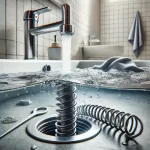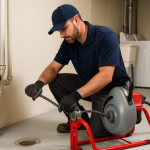CLOGGED TOILET: SOLUTIONS AND TIPS FOR YOUR PEACE OF MIND
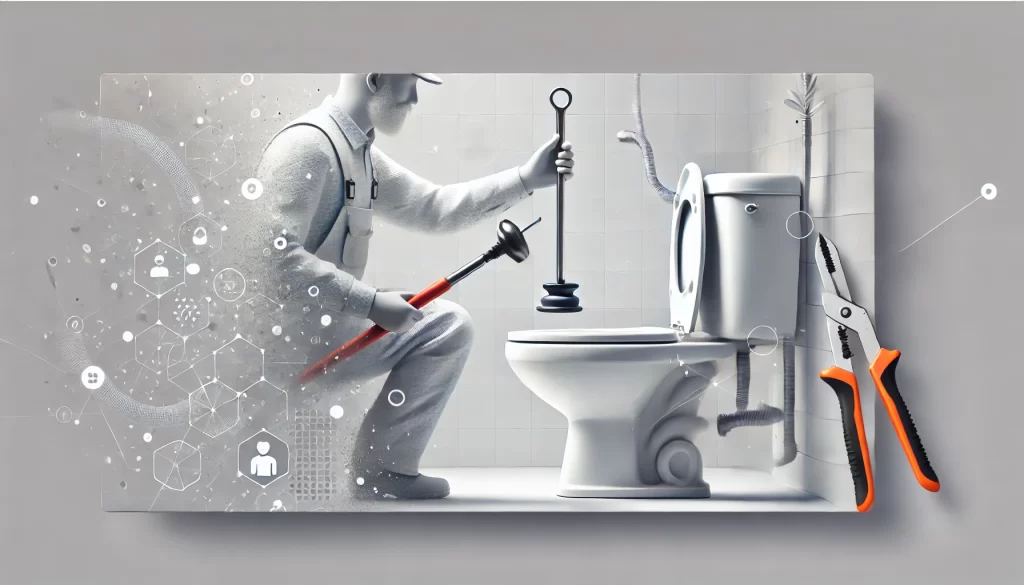
Blocked toilet: what you need to know
- Frequency : A clogged toilet is one of the most common plumbing problems in Quebec.
- Various causes: Limescale build-up, objects falling into the bowl, insufficient water flow or faulty mechanical parts.
- Risks : Bad odors, wastewater backflow and potential water damage if the problem is ignored.
- Importance of diagnosis: A careful examination (visual or with a plumbing snake) can reveal the exact nature of the clog.
- Solutions: From a simple plunger to an emergency plumber intervention, there are several approaches to restore normal use of your facilities.
Persistent clogged toilets: why act now?
A clogged toilet is not just a minor inconvenience. Delaying action can worsen the blockage, leading to costly or unsanitary complications. The causes are numerous: limescale reducing water flow, improperly discarded wipes, faulty internal components, etc. Until the true cause of the problem is identified, every flush carries a risk of overflow.
In this context, rapid intervention is essential, if only to :
- Avoid grey water stagnation and unpleasant odours.
- Reduce the risk of leaks and water damage in the room.
- Limit the impact on other pipes in the house (risk of backflow into other drains).
- Keep it clean, especially if you have children or pets.
Solutions vary depending on the type of blockage, but the speed of intervention remains a key factor in restoring normal use of your facilities.
Steps to unclogging a toilet effectively
To eliminate a stubborn clog, using a structured method ensures optimal results. Here is an overview of the main steps for a drain unclogging:
1. Inspection and preparation
The plumber, or you yourself if you're trying to fix the problem for the first time, observes the water level and checks whether the siphon is accessible. This phase helps determine the best approach (plunger, plunger, partial dismantling of the toilet, etc.).
If the water is close to the edge of the bowl, lower it before handling to avoid overflow.
2. Identify the source of the blockage
Accidentally dropped objects (toothbrushes, toys), bulky piles of paper or limescale deposits: each cause requires its own approach. For example, a ferret is best suited to dislodging a block of limescale, while a simple plunger is often sufficient for a shallow blockage.
3. Uncorking method
Once the problem has been identified, the chosen technique is applied:
- Suction cup or hand pump: effective for dislodging blockages superficial.
- Furet: ideal for deeper blockages, particularly in pipe bends.
- Homemade solutions (bicarbonate, vinegar, hot water) or enzymatic solutions, if the build-up is organic.
- Disassembly: in extreme cases, removing the toilet allows direct access to the plug.
The most important thing is to proceed with care to avoid damaging the bowl or the flushing system.
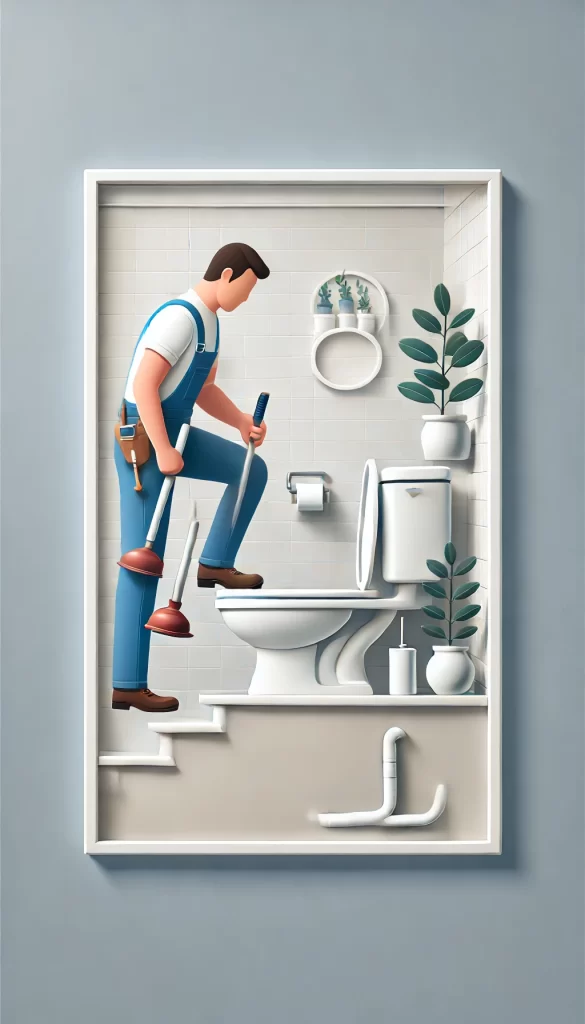
4. Validation and cleaning
After the operation, the toilet is flushed to check that it is flowing properly. If all goes well, and no suspicious noises are detected, the plug is considered eliminated.
A final clean-up is essential to ensure a clean environment, especially if minor spills have occurred.
5. Maintenance tips
To prevent clogged toilet adopt good habits:
- Only flush toilet paper down the toilet (wipes and other similar products interfere with drainage).
- Perform a light maintenance with white vinegar to combat limescale.
- Regularly check the flush mechanism and replace any worn parts (chain, valve, float).
- Do not force the flush if you feel resistance; it is better to intervene immediately.
With these precautions, you can considerably reduce the likelihood of a new incident. congestion.
Why call in a professional for your clogged toilet?
Certainly, several DIY methods exist for a clogged toilet. However, calling an emergency plumber offers significant advantages:
- Specialized equipment : Inspection cameras, professional ferrets and water jets allow pipe unclogging faster and longer-lasting.
- Safety : Chemicals used inappropriately can damage your pipes or affect the health of occupants.
- Precise diagnosis: An expert can easily spot any faults in the plumbing system (cracks, collapsed pipes, etc.).
- Long-term savings : Fix the root cause of a congestion limits the risk of recidivism and avoids major repairs later on.
- Peace of mind: You can resume your activities without fear of another outburst.
When all is said and done professional is often a time-saver and a real guarantee of quality. Nobody wants to live in constant fear of leaks or flooding.
Ecological solutions to prevent a clogged toilet
Concern for the environment also applies to plumbing. In addition to chemical drain openers, there are a number of more responsible alternatives for avoiding a clogged toilet :
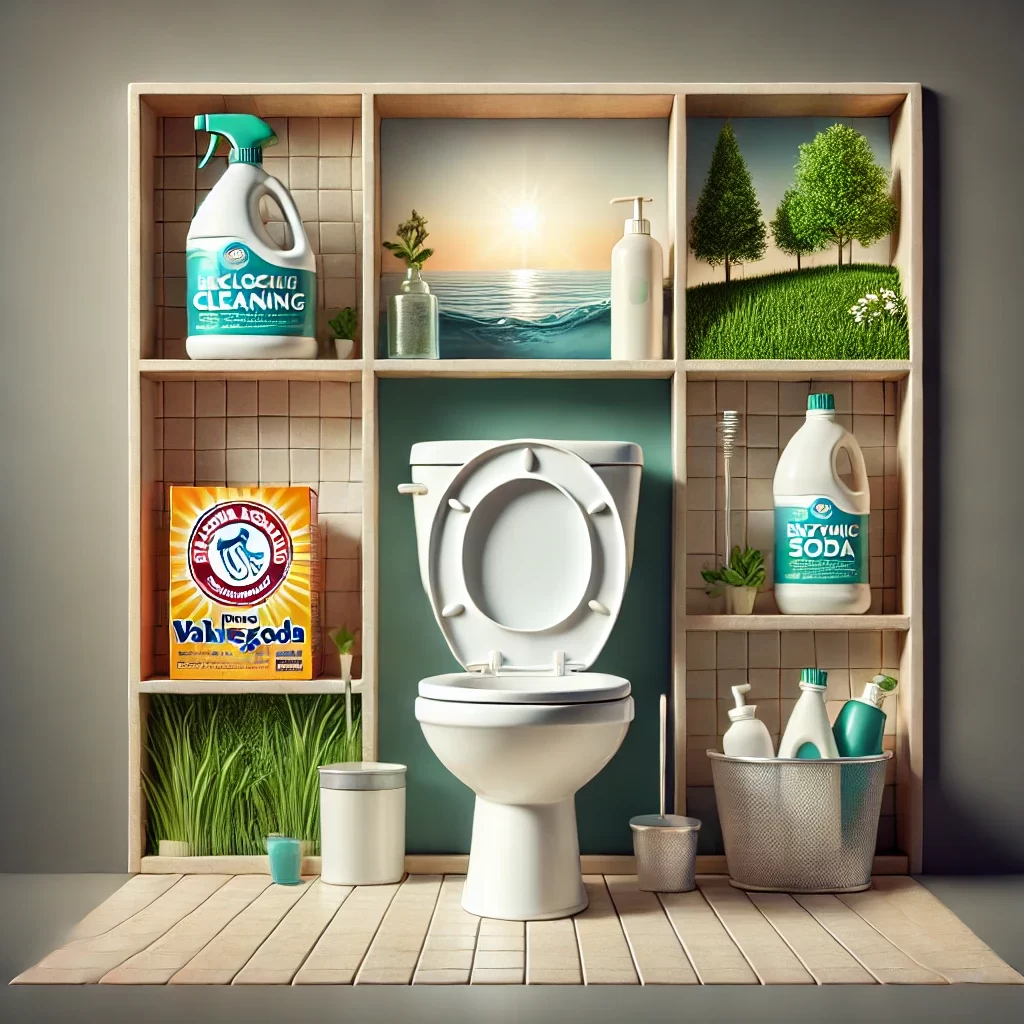
1. Natural prevention
Regularly clean the bowl with white vinegar and a little bicarbonate limits the build-up of limescale and residues. This gentle method prevents many blockages.
2. Enzyme products
Some biological unblockers contain bacteria that degrade organic matter, without risk to the environment or your pipes. They progressively dissolve the matter responsible for a blocked pipe. Clogged toilet.
3. Reusable material
Suction cups, manual ferrets and air pumps are all effective, economical and reusable tools, reducing dependence on chemical products and guaranteeing a long service life. efficient uncorking.
4. Preventive inspection
A professional plumber can carry out periodic checks to make sure there are no emerging problems. This approach saves you the hassle of dealing with a clogged toilet at the worst of times.
When should I call an emergency plumber?
We recommend that you call in a unclogging expert if you encounter any of these situations:
Critical water level
When water rises dangerously in the bowl, it's best not to take any chances and to call for rapid intervention. An extra flush could cause an overflow.
Persistent poor drainage
If you have to use the plunger every time you flush, it's a sign of a problem. blocking more serious. Long-term repair is then necessary to avoid damaging the plumbing.
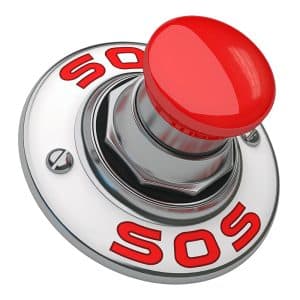
Repair or replacement of parts
A broken flush chain, a flapper that no longer closes, or a damaged float can all contribute to a blockage. Sometimes, the issue goes beyond a simple unclogging, requiring the expertise of a plumber.
Persistent odors or backflow
Sewer odors or brown water backups often indicate a major malfunction in the drainage system. It's vital to take action before the situation gets out of hand.
New or old real estate
Whether you have just moved in or live in an older home, a plumbing inspection is essential to avoid any unpleasant surprises. The goal: detect any issues before a critical clog occurs.
Put your trust in SOS Plombiers
Specialized in toilet unclogging and all emergency plumbing work, our team at SOS Plombiers stands out for:1. Solid experience : We understand the specifics of Quebec's plumbing network.
2. Quick response: A simple call may be all it takes to avoid damage and discomfort.
3. Adapted methods : We focus as much on environmentally-friendly solutions as we do on tried-and-tested techniques, for lasting results.
4. Comprehensive support : From initial assessment to final follow-up, we're here to ensure your peace of mind.
With SOS Plombiers, you can count on a professional and transparent service to meet your needs for pipe unclogging and sanitary maintenance. Our priority: to provide you with a healthy and comfortable living space, without the fear of a new blocking.
Don't hesitate to contact us for an inspection, advice or emergency intervention. Let's work together to keep your systems running smoothly and avoid the inconvenience of a breakdown. clogged toilet.

